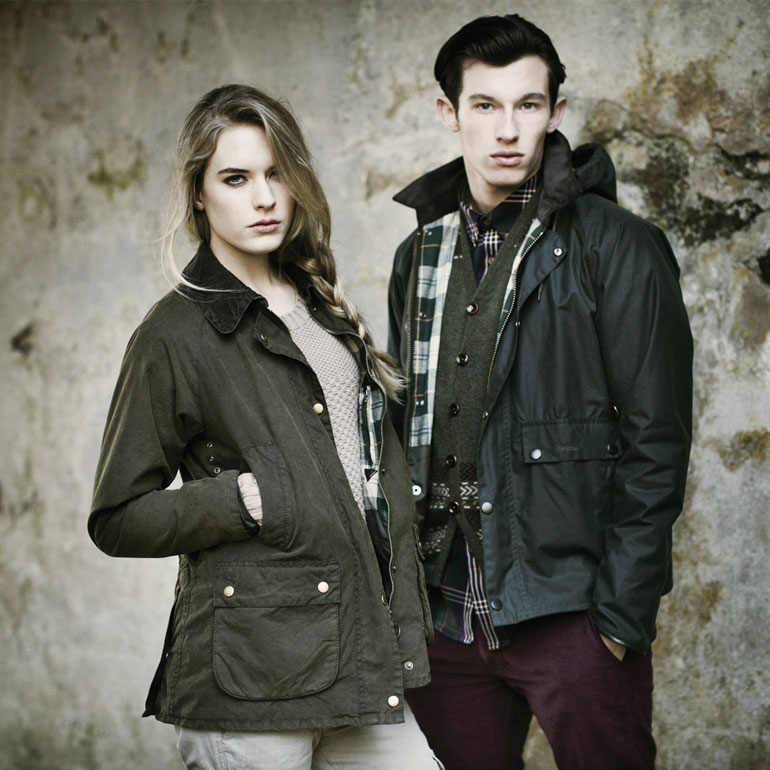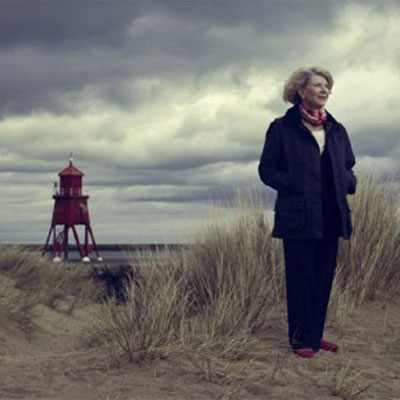Barbour: A Remarkable Family Story

'I met John in London when we were in our early twenties and I was teaching,' Margaret Barbour recalls. 'We fell in love very quickly and got married. We went back north to Newcastle for four years then, in 1968, when he was only 29, John died very suddenly after a brain haemorrhage. I was utterly devastated. My daughter Helen was not quite two and it was the worst moment of my life.
Suddenly, I found myself the majority shareholder of this company that had been going for nearly 75 years. Until then, the idea that I'd get involved in the business had simply never occurred to me. But John was so proud of the business, and of the fact he was fourth-generation Barbour, I knew that I had to.
Learning to run Barbour
My new role was all-consuming and was also a way to cope with the grief. I had lots of adrenalin, which helped enormously, and I also drew on the skills that I'd learned from teaching, which is a very difficult job. I didn't go along saying "I'm the new director". I made sure that I learned everything I jolly well could - from making the garment to how it was sold, from working in the store room to being on reception to working in accounts.
I went out into the field with the agents we used and found out what people thought of us. I listened and made radical changes, bringing in new recruits dedicated to my vision of transforming the company into an international brand.
John's mother, Granny Barbour, was extremely supportive. She had a tragic life. The year after she married, her husband went straight to war and became a prisoner of war. Granny worked to keep the business going while he was away and her husband had only been home about 11 years when he suddenly died.

The Barbour lifestyle jacket is born
Sign up to our free daily email for the latest royal and entertainment news, interesting opinion, expert advice on styling and beauty trends, and no-nonsense guides to the health and wellness questions you want answered.
Working on a trade stand in France in the 70s, I saw all sorts of interesting little jackets and it made me realise that we could expand the Barbour range. Instead of making just sporting or industrial garments, we started making lifestyle coats - the Bedale jackets, the Beaufort jacket - in navy as well as in green - and quilted jackets in all sorts of colours. They took off tremendously, and even though there was a recession in the 80s, we did very well.
I have never put pressure on Helen to come into the business. But she has made her own way, and now heads up the Sporting portfolio at Barbour. I won't retire, though. Granny Barbour was chairman until her mid-70s and I'm not there yet.
Meeting The Queen
People get very attached to their Barbours - even the Queen. Before her Silver Jubilee I noticed her Barbour was looking a bit scruffy so I wrote to her secretary to see if I could present her with a new one. The Queen graciously accepted the new jacket but also requested that her old one be re-conditioned and sent back, which we did.
When I went to Buckingham Palace to get my CBE and DBE the Queen said to me, "I'm very proud, Dame Margaret, to present this to you - surely every closet in Britain must have a Barbour jacket in it." I think I filled with tears - I was very proud.'